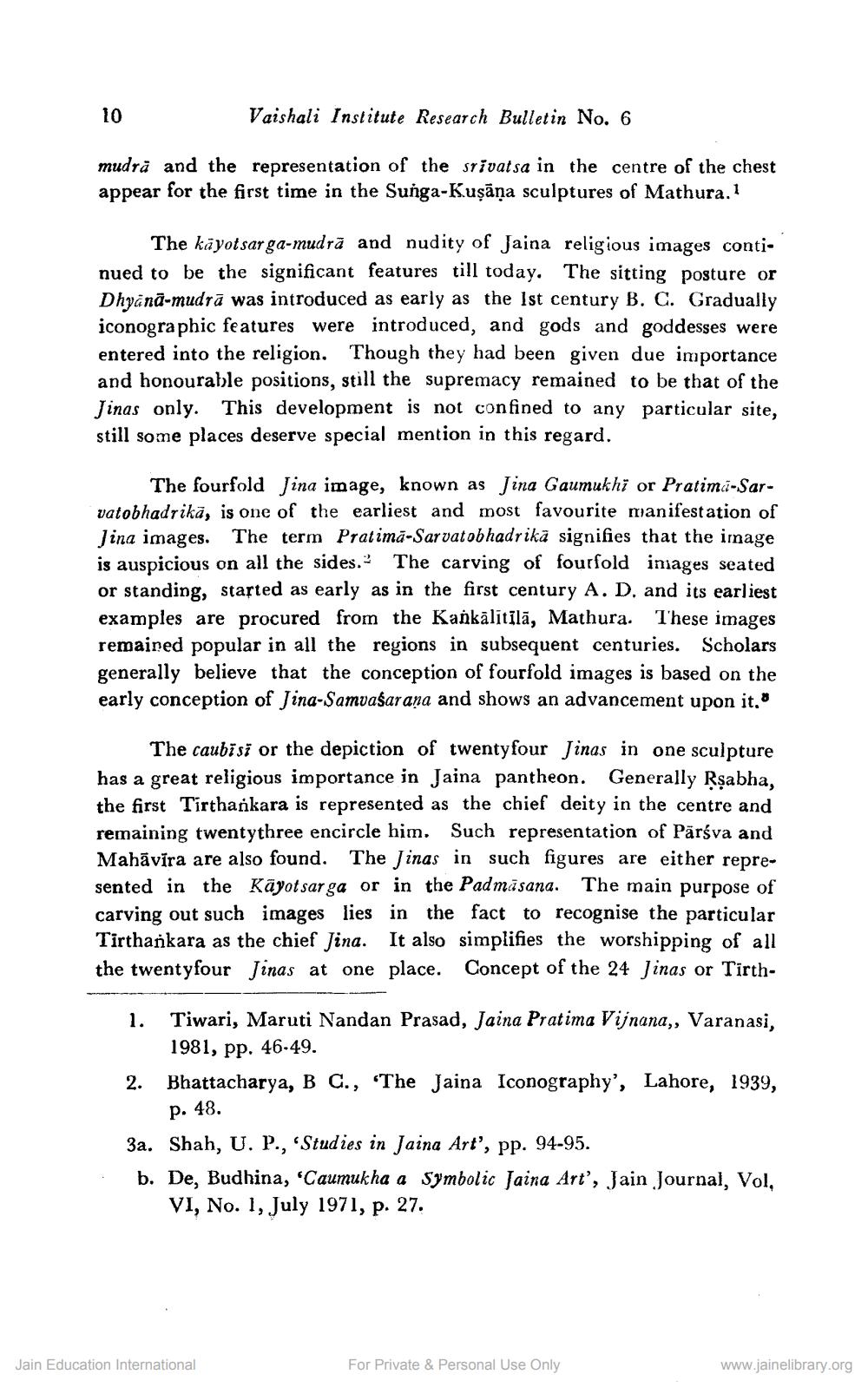________________
Vaishali Institute Research Bulletin No. 6
mudra and the representation of the srivat sa in the centre of the chest appear for the first time in the Sunga-Kuşāņa sculptures of Mathura.1
The käyotsarga-mudra and nudity of Jaina religious images continued to be the significant features till today. The sitting posture or Dhyanā-mudrā was introduced as early as the 1st century B. C. Gradually iconographic features were introduced, and gods and goddesses were entered into the religion. Though they had been given due importance and honourable positions, still the supremacy remained to be that of the Tinas only. This development is not confined to any particular site, still some places deserve special mention in this regard.
The fourfold Jina image, known as Jina Gaumukhi or Pratima-Sarvatobhadrikā, is one of the earliest and most favourite manifestation of Jina images. The term Pratima-Sarvatobhadrikā signifies that the image is auspicious on all the sides. The carving of fourfold iniages seated or standing, started as early as in the first century A. D. and its earliest examples are procured from the Kankālītilā, Mathura. These images remained popular in all the regions in subsequent centuries. Scholars generally believe that the conception of fourfold images is based on the early conception of Jina-Samvašarana and shows an advancement upon it."
The caubisi or the depiction of twentyfour Jinas in one sculpture has a great religious importance in Jaina pantheon. Generally Rsabha. the first Tirthankara is represented as the chief deity in the centre and remaining twentythree encircle him. Such representation of Pārsva and Mahāvīra are also found. The Jinas in such figures are either represented in the Kāyot sarga or in the Padmāsana. The main purpose of carving out such images lies in the fact to recognise the particular Tirthankara as the chief Jina. It also simplifies the worshipping of all the twentyfour Jinas at one place. Concept of the 24 Jinas or Tirth
1. Tiwari, Maruti Nandan Prasad, Jaina Pratima Vijnana,, Varanasi,
1981, pp. 46-49. 2. Bhattacharya, B C., 'The Jaina Iconography', Lahore, 1939,
p. 48. 3a. Shah, U. P., “Studies in Jaina Art', pp. 94-95. b. De, Budhina, 'Caumukha a Symbolic Jaina Art, Jain Journal, Vol,
VI, No. 1, July 1971, p. 27.
Jain Education International
For Private & Personal Use Only
www.jainelibrary.org




